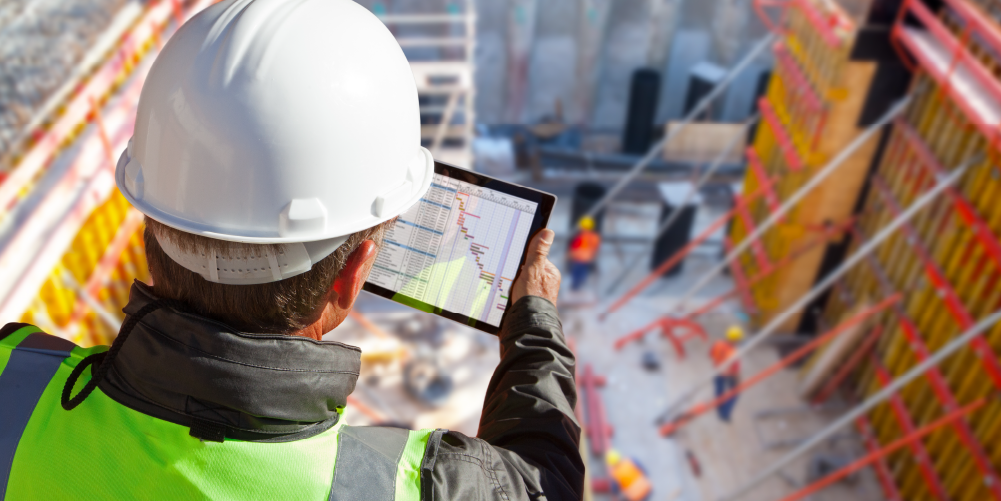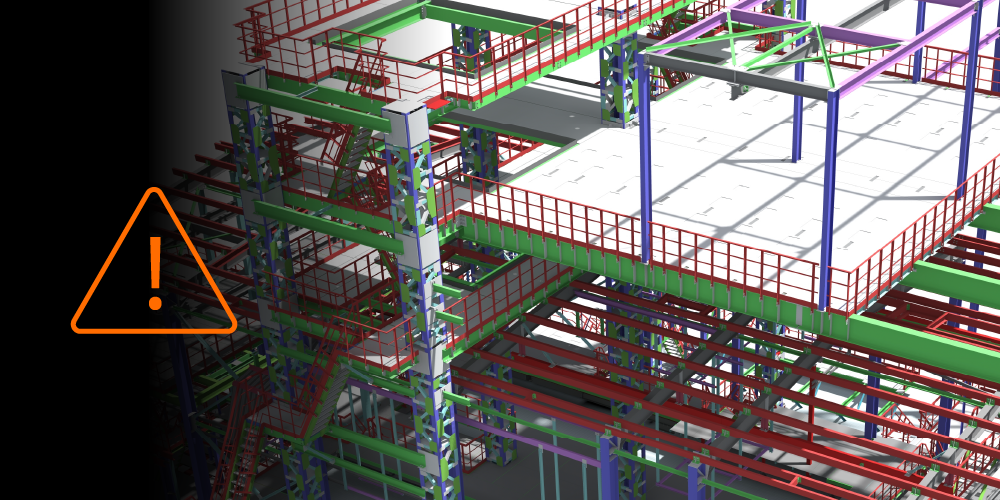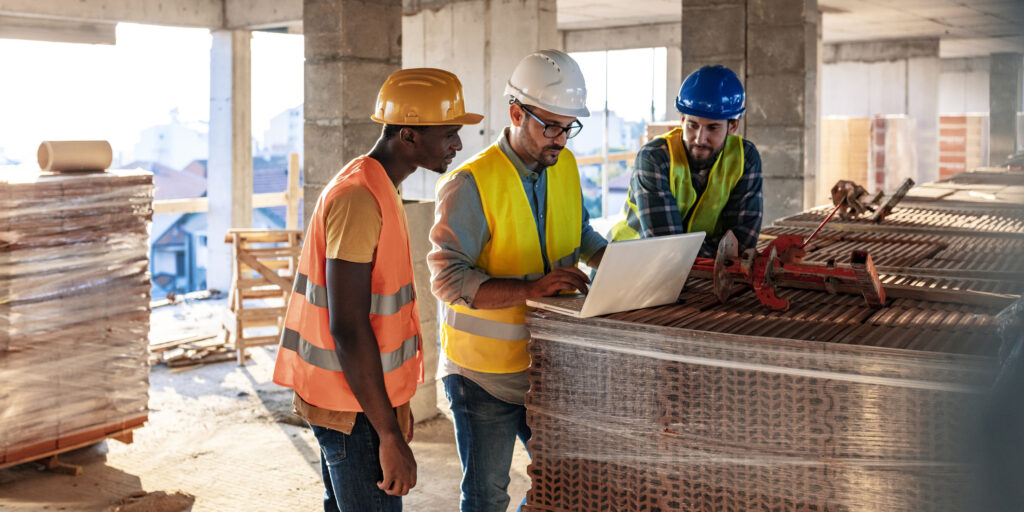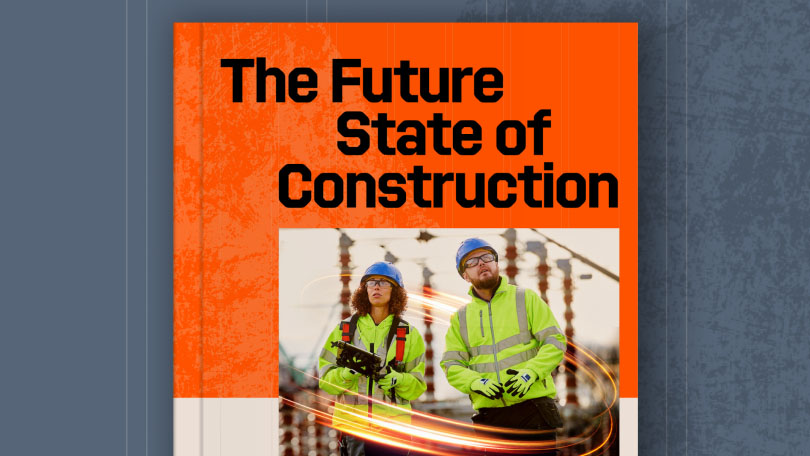Related Articles
— 9 min read
Take 5 Safety: A Practical Layer in Construction Risk Management

Last Updated Aug 31, 2025

Josh Krissansen
48 articles
Josh Krissansen is a freelance writer with two years of experience contributing to Procore's educational library. He specialises in transforming complex construction concepts into clear, actionable insights for professionals in the industry.
Last Updated Aug 31, 2025

Construction sites don’t run on plans alone. They run on people making decisions in unpredictable conditions — where one missed hazard can lead to serious injury, lost time, or legal exposure.
That’s why even with formal safety documentation like Safe Work Method Statements (SWMSs) and Job Safety Analyses (JSAs) in place, leading contractors are reinforcing their risk management systems with frontline procedures that operate at the point of work.
Take 5 Safety is one of the most widely adopted tools for this purpose. It’s a five-step risk assessment that field teams complete before beginning any task, particularly those that fall outside structured planning windows.
In this article, we’ll explore how Take 5 Safety supports site-level decision-making, where it fits within the broader WHS framework, and how contractors can embed it into their day-to-day operations to reduce incidents and strengthen safety culture without slowing productivity.
Table of contents
What is Take 5 Safety?
Take 5 Safety is a rapid risk assessment tool used to identify immediate hazards before work begins. It follows five defined steps:
- Stop and Think
- Identify Hazards
- Assess Risks
- Control Risks
- Proceed (if safe) and Monitor
The process prompts workers to pause, evaluate the task environment, and implement controls on the spot.
Using Take 5 is always helpful, but the approach has the greatest positive impact on short-duration or lower-risk activities where formal Safe Work Method Statements aren’t required but site hazards still exist.
Its widespread adoption across Australian construction reflects its value as a practical, frontline risk management tool.
The Importance of Take 5 Safety on Construction Sites
Formal documentation like Safe Work Method Statements and Job Safety Analyses is critical for planning and compliance. But construction sites shift by the hour, and those documents can’t always keep pace with the realities of site operations.
Take 5 Safety allows workers to bridge that gap.
When workers follow the process, they can immediately identify risks in the field and make sound decisions when conditions change or new hazards emerge.
Here are just a few common scenarios workers face — and where Take 5 is their first, go-to safety tool:
- Sudden weather changes affecting task safety
- Unstable or shifting ground conditions
- Proximity to other subcontractors' high-risk activities
- Overlapping work zones with limited visibility or space
Take 5 also supports a behaviour-based safety model by embedding hazard awareness into daily activity. When used consistently, it contributes to:
- Fewer hazards missed at the task level
- Lower incident rates and reduced lost-time injuries
- Greater worker engagement and ownership of safety
- Consistent alignment with organisational WHS objectives
Used alongside structured safety systems, Take 5 enhances response times, strengthens safety culture, and helps demonstrate due diligence under Safe Work Australia model WHS laws.
The 5 Steps of the Take 5 Safety Checklist
In 2023, a scaffolder in NSW stepped onto an unsecured platform and suffered serious injuries. A post incident review found no pre-task risk check was completed
This isn’t an isolated oversight. SafeWork NSW’s “Scaff Safe 2021” initiative visited 438 construction sites and found that:
- Principal Contractors had allowed workers to access incomplete scaffolds at 49% of sites
- 43% of sites had working decks with missing planks, ledgers or hop-ups
- 43% of sites had missing mid rails
Because the task felt “routine”, no one had paused to reassess the risk. But a five-minute check could have flagged life-threatening gaps in control and the scaffolder’s injuries
That’s the role of the Take 5 checklist — helping crews stop, assess, and make safer decisions in real-time. Let’s break down each step:
Stop and Think
Before commencing any task, pause to assess what the activity involves and what could go wrong. Consider the task’s complexity, the tools required, the work environment, and nearby personnel or subcontractors.
For example, the task may be located near an operating mobile plant, requiring coordination with subcontractors moving through the area.
This step ensures workers do not rely solely on routine or familiarity when assessing risk.Identify Hazards
Scan the work area thoroughly for potential hazards. This includes physical risks such as unguarded edges or unstable surfaces, as well as electrical, chemical, and environmental hazards.
Hazards may not be immediately obvious and can emerge due to earlier tasks or shifting site conditions.
For instance, the path to the work zone may pass through an unmarked excavation area, creating a fall hazard.Assess Risks
Evaluate each identified hazard in terms of likelihood and consequence. This step helps prioritise which hazards require immediate controls. Consider whether the hazard could affect multiple workers, trigger broader site disruption, or result in serious injury or downtime.
For example, a damaged handrail in a poorly lit stairwell could lead to a serious fall during material handling.Control Risks
Implement the most effective control available before work begins. Use elimination, substitution, isolation, engineering, or administrative controls, and apply personal protective equipment only as a final layer.
The goal is not to delay the task, but to ensure it proceeds with known risks managed to an acceptable level.
On construction sites, this may involve tagging out an energised electrical circuit before beginning work.Proceed (if safe) and Monitor
Start the task only when controls are in place and the environment is stable. Monitor conditions actively and be prepared to pause if new hazards emerge or if controls no longer hold. Site conditions change rapidly, so real-time awareness remains essential even after work begins.
For instance, work may need to pause if strong winds develop during a crane lift, requiring reassessment of the activity before continuing.
How Take 5 Safety Supports (Not Replaces) Existing Construction Safety Frameworks
Take 5 Safety is not a replacement for SWMS or JSA. It’s a task-level check used to validate conditions before starting work.
While SWMSs and JSAs provide structured planning for high-risk work, Take 5 operates in real time. It allows workers to reassess hazards as conditions change and identify risks that formal documentation may not reflect.
For example, a concreting crew preparing for a pour under an existing SWMS notices that an adjacent excavation has deepened since the last inspection. During the Take 5, they pause to reassess edge protection, restrict access to the affected area, and notify the site supervisor before proceeding.
Take 5 reinforces — rather than replicates — broader site risk management strategy like daily reports, inspections, and digital quality management platforms. When digitised, it also provides traceability and oversight across crews and work areas.
Pro Tip
Don’t measure Take 5 success by completion rates—measure it by the quality of what’s recorded. A well-documented hazard tells you more about your culture, systems, and leadership than a stack of ticked forms ever will.
How to Improve Worksite Safety Culture with Take 5 Safety
Embedding Take 5 Safety into everyday operations requires more than training. It demands leadership modelling, system integration, and a clear expectation that safety is everyone’s responsibility.
Make Take 5 a Habit, Not a Hurdle
Set a clear expectation that Take 5 is part of every task, including routine or low-risk activities. Safety teams should monitor usage rates, but more importantly, observe whether it is treated seriously in the field.
Support the adoption of Take 5 procedures as a habit by:
- Requiring supervisors and leading hands to complete Take 5s in view of their crew before starting work
- Including Take 5 completion and quality as part of daily supervisor check-ins
- Reinforcing the message that regular use improves hazard awareness, not just compliance
Treat Take 5 as a Thinking Tool, Not a Form to Complete
Shift the perception from paperwork to pre-task problem solving. Workers must be trained to read the environment, not just tick boxes.
Leaders should:
- Use real-world scenarios in training to practice identifying subtle hazards
- Reinforce that a fast Take 5 is not necessarily a good one
- Ban pre-filled templates or “bulk” completions and require that every checklist reflects current conditions
- Include the phrase “What has changed since yesterday?” to encourage reflection
Anchor Accountability in Leadership Behaviour
Frontline culture follows what leaders do, not what they say. Supervisors must demonstrate what a high-quality Take 5 looks like and ensure workers know it is reviewed for quality, not just completion.
Create accountability by:
- Having supervisors debrief their own Take 5s with the team during morning setup
- During audits, spot-checking whether recorded hazards match visible site risks
- Setting clear consequences for token use and reward thoughtful submissions
Coach for Better Hazard Recognition and Recording
Train workers to move beyond the obvious and surface-level risks. Many missed incidents start with something small.
Here’s how to implement safety coaching:
- Run targeted sessions on common blind spots: ground instability, proximity to others, sequence clashes
- Teach crews how to break down tasks into phases and identify new risks as the task evolves
- Ask teams to explain why a hazard matters, not just list it
Link Control Choices to the Hierarchy of Control
A strong safety culture requires teams to understand the difference between managing risk and eliminating it.
You can operationalize that control with the following approaches:
- During toolbox talks, walk through recent Take 5s and ask whether a more effective control could have been used
- Add a question to the checklist: “Could this risk be eliminated?”
- Make sure workers understand that PPE is a last line of defence, not the first option
Support Stop Work Decisions as a Marker of Safety Maturity
Stopping work is a professional judgment call, not a failure or disruption. It must be treated as leadership behaviour, especially in high-pressure environments.
Implement these practices:
- Instruct supervisors to immediately support any stop work decision without blame
- Hold brief debriefs after each event: what triggered the stop, what was done well, and what was learned
- Track and celebrate positive stop work examples during team meetings and reviews
Use Take 5 Insights to Inform Broader Safety Strategy
Take 5 checklists are a rich source of frontline data. When aggregated, they can help predict risks before they escalate.
Plan to:
- Review completed Take 5s weekly to identify repeated hazards or control gaps.
- Feed trends into toolbox talks, SWMS revisions, and site setup planning.
- Use digital tools to track near misses and high-frequency hazard types across crews or zones.
Continuously Improve the System, Not Just the Behaviour
Take 5 must evolve with the project. Static checklists quickly lose relevance, especially on long or complex builds.
Avoid this by:
- Updating examples, prompts, and structure regularly to reflect the current stage of construction
- Involving workers in reviewing and refining the checklist to surface usability issues or unclear questions
- Treating Take 5 as a live tool, not a static form, and give site teams ownership over how it evolves
Take 5 Safety strengthens real-time decision-making on dynamic construction sites.
Take 5 Safety provides a simple and effective way to assess and control risks at the point of work. When used consistently, it reinforces formal construction safety systems, improves hazard awareness, and builds a stronger safety culture across the project.
Categories:
Written by

Josh Krissansen
48 articles
Josh Krissansen is a freelance writer with two years of experience contributing to Procore's educational library. He specialises in transforming complex construction concepts into clear, actionable insights for professionals in the industry.
View profileExplore more helpful resources

Managing Direct Costs in Construction: How Visibility Drives Profitability
Direct costs define the financial reality of every construction project. They cover the labour, materials, and equipment that drive delivery and determine profitability. But even the best-planned budgets can shift...

BIM Clash Detection: Reducing Rework, Delays, and Risk in Construction
Design clashes can be a significant hidden cost in construction, as each conflict between systems risks expensive rework, project delays, and reduced margins. BIM clash detection empowers teams to identify...

Next-Gen Job-Costing: Ready to Move? 5 Things to Consider Before You Get Started
In this three-part series, Quantity Surveyor turned Financial Solutions Specialist Clint Burgess uncovers the real-world gains for people, processes, and profits when businesses move from legacy to next-generation Enterprise Resource...

From Workarounds to Workflow: Solving Construction’s Legacy Job-Costing System Challenges with Next-Gen Tools
In this three-part series, Quantity Surveyor turned Financial Solutions Specialist Clint Burgess uncovers the real-world gains for people, processes, and profits when businesses move from legacy to next-generation Enterprise Resource...
